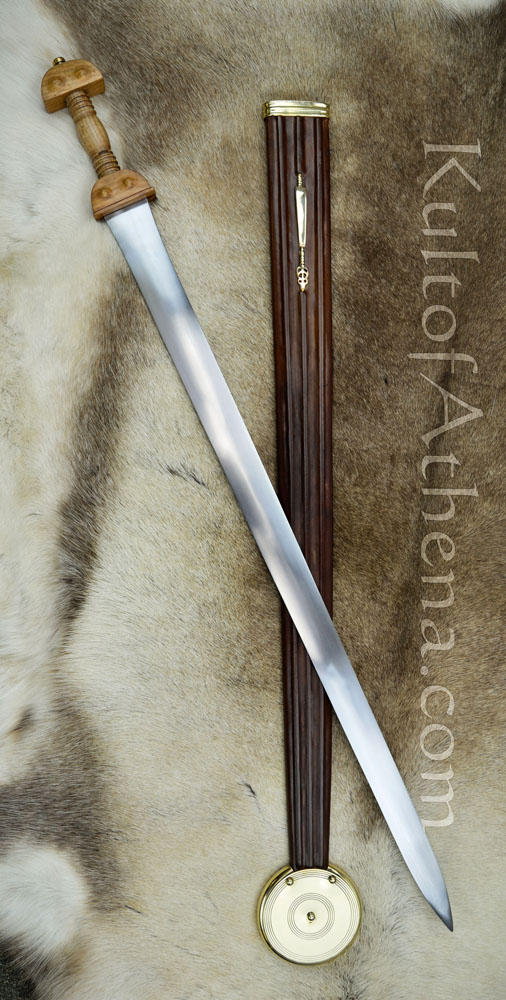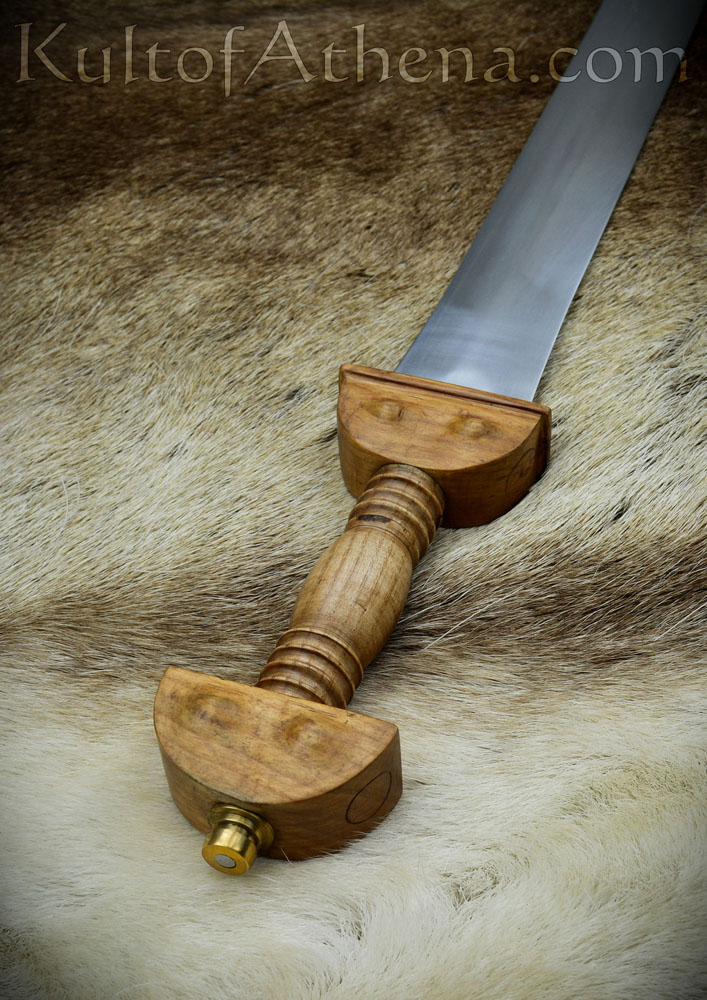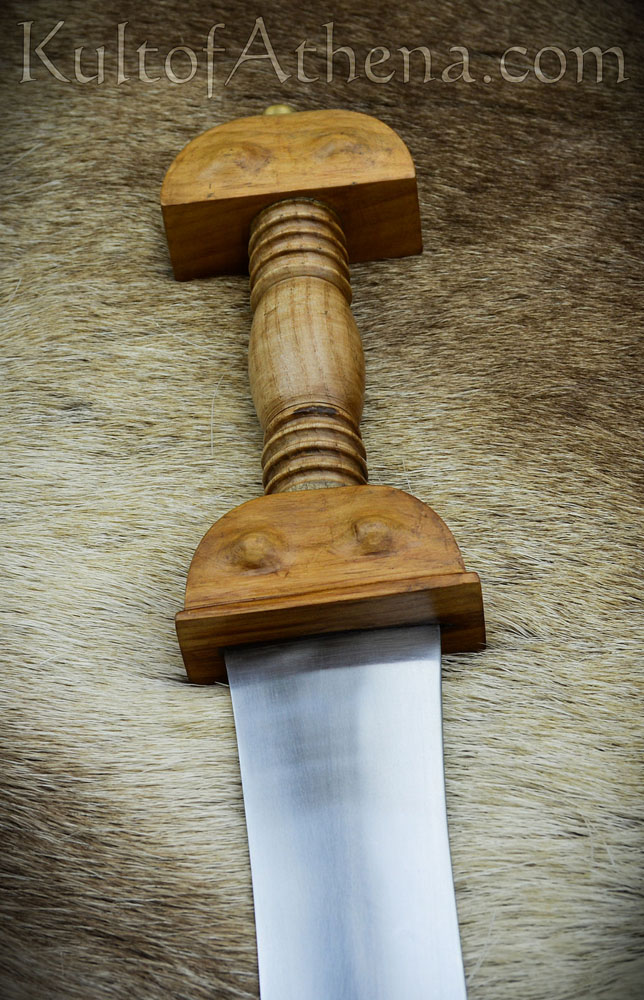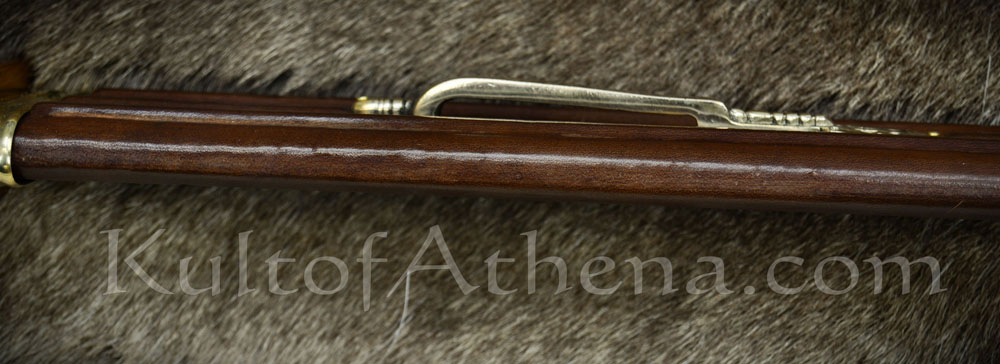Overview
Our sharpening service will provide a good serviceable edge on the blade. The result is typically “very sharp” with a small secondary bevel and a bit of an “apple seed” profile. The resulting edge is somewhat dependent on the particular blade. Some blades will take and hold sharper edges than others and the thickness of the blade will determine how wide the bevel will need to be. We adjust the angle of the edge to suit the specific blade and attempt to get as close to a bevel-less edge as possible without marring the surface of the blade.
The Sharpening Process
The sharpening service is done with a belt sander. The process involves many passes with sanding belts of various grits. The blades are rested between passes to prevent them from becoming hot and damaging their temper. By default we will sharpen as much of the blade as possible including any false edges if appropriate. If you have a different preference, feel free to make that request in the special instructions at check out. We can sharpen only the last half or third of an edge, for example. Our sword sharpening expert has personally sharpened several thousand swords at this point, so will provide you with a professional service.
What the Service is Not
The resulting edge will be “sword sharp” not razor sharp. Our goal is to provide you with a usable edge for cutting practice that will hold up to some use and not require constant re-sharpening. In other words, we intend to provide you with a serviceable weapon, not a personal grooming implement. The service will not provide a completely bevel-less edge. To create that type of edge will necessarily scratch up the blade surface and we lack the machinery and time to provide a full re-polishing of a blade’s surface. A service of that nature would be significantly more expensive as a great deal more time would be required. We do not offer this type of service at this time.
Disclaimer
We make no guarantee that the resulting edge will meet with your expectations. Every blade is different and some will take and hold a sharper edge than others, due to the blade material, heat treatment or geometry. Some customers can also have incorrect assumptions about sword sharpness and improper expectations as a result. All we can say for sure is that the resulting edge will be sharper than the default edge, in most cases, significantly so. We can not provide any refunds for the service once it has been completed, so consider it to be provided “as is”. That being said, if you are unhappy with the product for any reason, we do still allow you to return the item for a full refund, including the sharpening costs under our normal return policy. This does not apply to special sharpening requests, for example if we sharpen something specially for you that does not normally list that option on our site. The vast majority of our customers are happy with the results of the service, so as long as you keep the above mentioned in mind, we are confident you will be pleased with the results as well.











Dave K. –
A unique old spatha from Depeeka The German tourism bureau and scholars has gone to great lengths to market the Roman presence in Germany; successful to the Point of getting the German limes included in the UN list of international historic treasures. In a pass in the Schwabian Alps of SW Germany there once stood a unique reserve fortress for a Cavalry Cohort. It’s excavation finds are in an on site museum. It provides a wealth of data on the cavalry arm of the Imperial Armies at the height of the Empire.
This is a an example of an enlisted sword (spatha) from the 2d Cent AD. It sports a long elliptical blade 32.3 x 1.25 inches. The hilt is all wood, with two large half moon pieces fro pommel and guard. A fancy dowelled 3.5 inch wood grip is in the middle. The blade thickness runs 4.5 x 2.9mm. Because the hilt is all wood and light, while the blade is long, the point of balance is out at 10 inches. This extreme bias to the point is not a handling issue because the sword only weighs 1.85 lbs.
The hilt is an issue. I assume the pieces were scaled to match the archaeological evidence. The guard and pommel pieces combined with the short grip are awkward to a large hand. In order to follow through with a blow, I have to pinch up on the guard piece, literally holding the guard block with my thumb and forefinger.
The scabbard is worth what you are paying for. A wood core, leather covered sheath, with a brass band at the mouth, a brass clip for cross wrapping a belt through, and a very large pill case ornamental box at the boot.
I had mine sharpened. With a scale similar to 19th Century Inafantry officer swords, this is intimidating. The dynamic balance is superior to many of Deepeeka’s other spatha swords.
I’m happy with it.
The Oblate –
I would like to start off by saying this is a decent sword for the price. It will do what you need it for.
*Side note: I paid for the sharpening service*
It is a heavy bladed sword as is expected with depeeka products.
I only have one problem that constituted me giving the sword 3 stars. That being the pommel gets in the way during strikes and digs into your wrist to the point where it can cause harm. No matter how I grip the sword the pommel still causes problems. Making follow through almost impossible.
The only course of action that I can see, is for me to sand down the
pommel’s points and edges to ensure proper striking capabilities.
That aside, if you need a decent sword at an affordable price. It gets the job done.
Always remember, Take care of your weapons and they will take care of you.